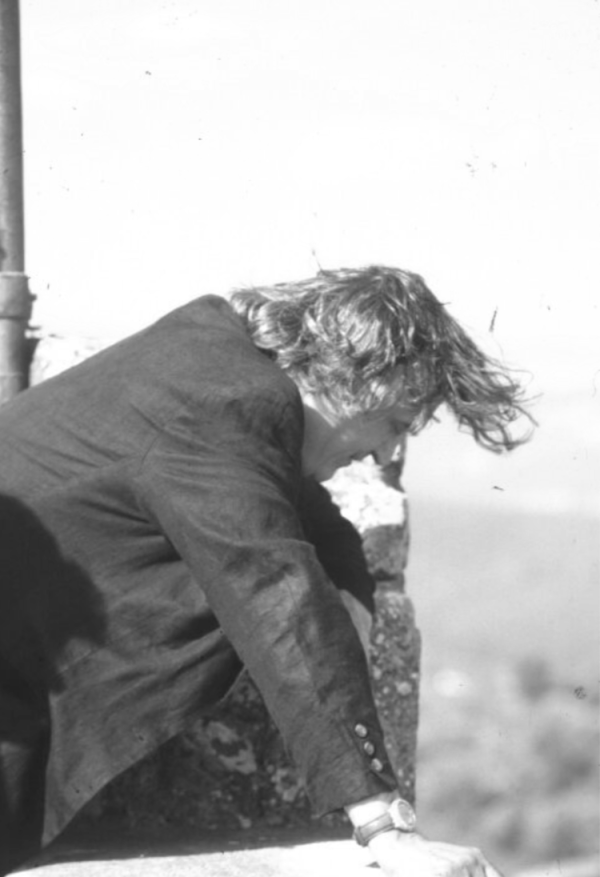Gilberto Zorio (1944, Andorno Micca) is a central figure of Arte Povera, known for his innovative and experimental approach that explores materials, energy and transformation. His artistic practice focuses on the relationship between science, alchemy and nature, creating works that activate a dialogue between space and time.
Zorio has collaborated with the Associazione Arte Continua on major projects, bringing his unique vision to Tuscany. They include the installations realised for Art to Art II a Montalcino and the project The Arbitrary Fountain, realised in Scandicci, with Art Technique and Technology. This public work, combining aesthetics and function, embodies the theme of transformation and energy, making water a central element of dialogue between the community and the urban environment.
In 2003, Zorio participated in the first edition of the ArteXVino = Acqua project, producing a label for Vernaccia Riserva di San Gimignano, Panizzi, for charity.
These collaborations testify to the deep connection between Zorio and the territory, confirming his contribution to the dialogue between contemporary art and cultural heritage.
His first exhibition was in 1963, in the Piccola Galleria d'arte moderna in Turin. From 1967 he established himself as one of the first exponents of arte povera. His first solo exhibition was in 1969, in Paris at the Ileana Sonnabend Gallery. 1973 Gian Enzo Sperone Gallery. Also in 1973 he took part in the tenth Quadriennale in Rome. Kunstmuseum in Lucerne in 1976. 1979 Stedelijk Museum in Amsterdam, also in 1979 Christian Stein Gallery. Participates in the Venice Biennale 1978, 1980 in 1986 again at the Venice Biennale with a personal room.Dokumenta IX in Kassel in 1992. Solomon R. Guggenheim Museum New York Collection. Author of geometric sculptures, in particular star-shaped sculptures, in the 1980s he introduced research into light and energy into his works, using light sources and ongoing chemical reactions. He has been the subject of numerous monographic exhibitions, including one at the Centre Georges Pompidou (1986), the Tel Aviv Museum of Art (1987), the Universities of Philadelphia (1988) and Berkeley (1992). 2000 Galerie Guy Bärtschi, Geneva. 2001 Dia Art Foundation: Chelsea, New York, NY, Tate Modern, London (England). 2002 Hirshhorn Museum and Sculpture Garden, Washington, DC; Walker Art Center Minneapolis MN; Museum of Contemporary Art Sydney NSW; MOCA THE GEFFEN CONTEMPORARY Los Angeles CA. 2005 ZKM | Museum für Neue Kunst & Medienmuseum, Karlsruhe, Fondazione Arnaldo Pomodoro Milan, again in 2005 at the Kunst- und Ausstellungshalle der Bundesrepubilk Deutschland Bonn. Zero to Infinity: Arte Povera 1962-1972 Tate Modern, London, at MAMbo in Bologna (2009). 2011 a major exhibition-event to tell the story of Arte Povera curated by Germano Celant that starting in September will be held simultaneously until April 2012 in various important Italian museums and cultural institutions in Bari, Bologna, Milan, Naples, Rome, Turin and Bergamo. From 7 October 2011 until 8 January 2012, MAXXI presents Omaggio all'Arte Povera with two large installations by Jannis Kounellis and Gilberto Zorio. In 2013 he took part in the LV Venice Biennale, his works were exhibited in the Pavilion of the Republic of Cuba together with those of H.H. Lim, Francesca Leone, Hermann Nitsch, in the exhibition "The Perversion of Classicity: Anarchy of Narratives".Recurring elements of his works are stars, spears, animal skins. Glowing wire (1970), javelin (1971), laser beam (1975) are the energy vectors that build the star form time and time again. Vases, basins and crucibles, like glass and lead alembics, constitute alchemical processes of transformation. However, there is never a metaphor, a reference to something else (despite the archetypal values and resonances of meaning that the star generally possesses): Zorio is interested in the strength, not the symbolic value, of the materials, even the most common, the possibility of combination that generates positive conflict and energetic tension.

